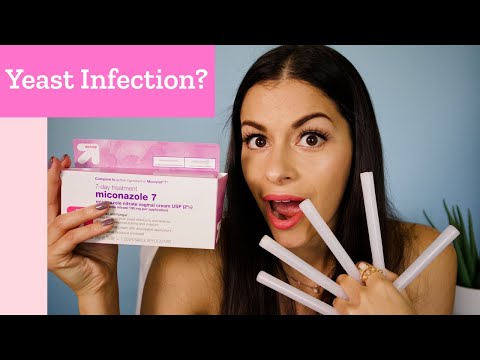Let me tell you, folks. In life, you’ll face plenty of challenges, and fungal infections can be a nasty one. But don’t worry—miconazole cream is here to pack a powerful punch! This antifungal superhero has proven to be a reliable ally in combating a whole host of fungal infections, including athlete’s foot, ringworm, and even those pesky yeast infections. If you’re serious about your fitness journey and aiming to flaunt those shredded six-pack abs, addressing any potential fungal issues is critical. So, let’s dive into the science behind miconazole cream and why it deserves a special spot in your gym bag.

The Science Behind Miconazole Cream
Miconazole cream operates on a molecular level that’s nothing short of fascinating. At its core, it tackles fungal infections by targeting ergosterol, a vital component of fungal cell membranes. Without ergosterol, the cell structure of fungi becomes weak and collapses. This means that when you apply miconazole cream, you’re not just slapping on some lotion; you’re launching a full-blown attack against those dermatophytes and candida fungi wreaking havoc on your health. Now, imagine that every time you apply it, you are actively participating in the battle for your body—talk about motivation!
Topical treatments like miconazole cream have undergone decades of research and trials, proving their efficacy in clinical environments. Not only is it effective, but it’s also incredibly accessible. So when you’re gearing up for your next workout or just chilling at home, treating a fungal infection can be as simple as applying some cream. Having a weapon like miconazole in your arsenal is critical for staying on top of your fitness game.

Top 5 Reasons to Choose Miconazole Cream Over Other Treatments
Let’s be real—when dealing with a fungal infection, you need the best options available. Here are five solid reasons why miconazole cream should be your go-to treatment:

Comparing Miconazole Cream to Other Antifungal Treatments
Now that you’re pumped about miconazole cream, let’s pit it against other antifungal options. You might find yourself wondering: Miconazole Cream vs. Lamisil Cream: Which is Right for You?
Choosing between these two often hinges on your specific infection. Lamisil, containing terbinafine, tends to shine for infections caused by dermatophytes alone. However, if you have mixed infections that include yeast, miconazole’s broader antifungal reach makes it a more versatile option. With miconazole, you’re not limited but instead empowered to tackle tougher challenges.
Next, let’s break down Miconazole Cream vs. Desonide Cream. It’s essential to know that desonide cream is primarily used for treating inflammatory skin conditions like eczema—not for fungal infections. If you’re facing a fungal threat, miconazole is your champ. Some might use desonide in tandem to manage inflammation, but caution is vital to avoid aggravating the fungal problem.

Natural Alternatives to Miconazole: Can Semolina Flour Help?
Now, hold on a second—this might sound strange, but some folks have turned to natural remedies in their quest for relief. Enter the curious case of semolina flour! While not a replacement for miconazole cream, some enthusiasts have touted semolina flour as a home remedy for skin irritations. Its texture may help exfoliate the skin, potentially assisting in removing dead cells that fungi love to hang out on.
But I can’t stress this enough—evidence supporting the efficacy of semolina against fungal infections is largely anecdotal. So while you can experiment, don’t let it replace effective treatments like miconazole. Stick to what works while keeping an eye out for alternatives!

Innovations in Fungal Infection Treatment: The Role of Retinol
Let’s shift gears for a moment and look towards the future. Recent studies are suggesting that retinol, typically recognized for its anti-aging properties, might also play a surprising role in managing fungal infections. Researchers propose that retinol can enhance your skin’s natural barrier, improving its defense against pathogens. This transformative potential opens the door for combining retinol with antifungal medications like miconazole cream for a comprehensive approach to skin health.
While retinol may not directly equate to miconazole cream, its application alongside antifungal treatments could create a powerhouse duo to support your skin’s health. Imagine attacking fungal infections head-on while stepping up your skincare game—talk about a win-win!
Final Thoughts: Empowering Your Health Journey
Miconazole cream isn’t just a simple topical treatment; it’s a well-researched solution that deserves your attention. As users like you seek quick relief, understanding how miconazole compares to treatments like lamisil and desonide can make a massive difference in your choices. Whether you’re diving into natural alternatives like semolina flour or exploring emerging options such as retinol, the journey to combat fungal infections offers plenty of possibilities.
Remember, your health journey is about empowerment. With knowledge and the right tools—such as miconazole cream—you can take charge of your body and unlock your best self. No fungal infection should hold you back from achieving those shredded six-pack dreams. Your mission to get lean, build muscle, and feel incredible starts with informed and effective care!
So get after it. Stay strong, stay motivated, and make miconazole cream your secret weapon in the battle against fungi!
Miconazole Cream: Fun Facts and Trivia
The Origins of Miconazole Cream
Did you know that miconazole cream, a powerful antifungal, has roots that trace back to the early 1970s? It was first synthesized to combat skin infections effectively, paving the way for over-the-counter treatments that can tackle toenail fungus and athlete’s foot. Speaking of fungi, they can sometimes appear in unexpected places—just like characters in the soul eater Manga, where fantastical elements bring the unusual to life. Manufacturers developed miconazole cream not only to fight fungal infections but also to support skin health, promoting overall well-being. This little cream can be a real game-changer!
Applications of Miconazole Cream
Miconazole cream isn’t just a one-trick pony. It can do wonders for various conditions. Alongside ringworm and jock itch, it’s also effective against infections caused by yeast and other fungi. Many people might wonder, “What’s the right way to apply it?” Well, a little goes a long way—just like knowing how many liters in a quart can help you measure accurately. Interestingly, miconazole isn’t limited to topical applications; some formulations are available as oral treatments, too!
Health Benefits Beyond the Cream
Let’s dive into some health trivia! Miconazole cream helps restore natural skin flora, making it an excellent choice for promoting skin health after fighting off infections. In fact, maintaining a balanced diet can promote overall wellness. For example, did you know that shrimp is not only delicious but also nutrient-rich? Research shows is shrimp good for you is a topic many are curious about, especially since a healthy diet can strengthen your immune system against infections. Meanwhile, certain blood elements like erythrocytes and abs neutrophils play crucial roles in fighting off those pesky fungi, so understanding how your body works can empower you in taking control of your health!
In conclusion, miconazole cream is more than just a simple remedy; it’s a powerful ally in the fight against fungal infections. Whether you’re battling athlete’s foot or skimming through various health articles, armed with knowledge, you can maximize your health journey. And remember, just like picking the perfect cocktail attire for men can elevate your style, choosing the right treatment can truly elevate your skin health!



























